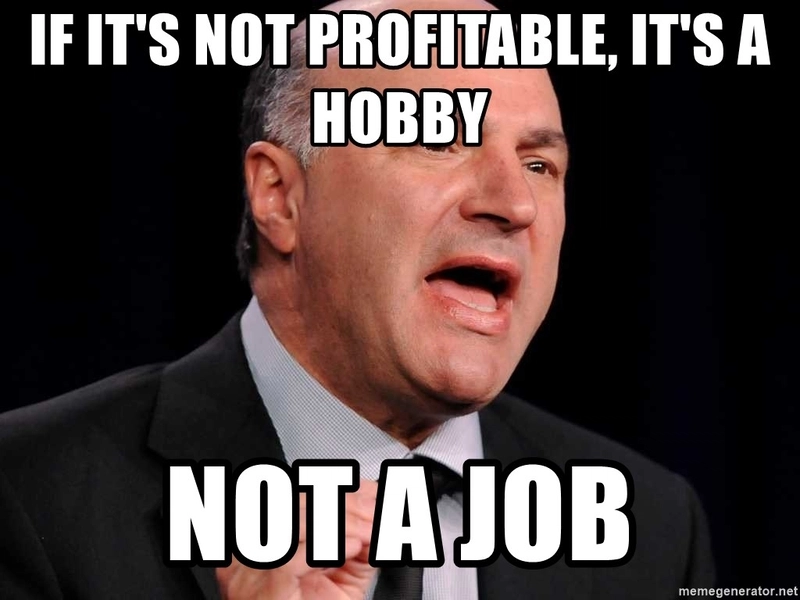So you've found your next SaaS idea: a platform that translates cat meows into Shakespearean sonnets. You're confident it will make millions and be the next biggest app of the year. You then go on to get 5 customers and lose hundreds of dollars on a product that flopped. The issue: no one wanted your SaaS. It's one thing to find an idea, but it's another thing to find a good one.
The key to good ideas: Validation
Let's face it. Good startup ideas come once in a blue moon. Everyone these days seems to think they've got the next great idea that will bring them $100k/month so they can quit their day job and go live in Bali. Spoiler alert, it won't. But for those of you nieve enough to continue down the startup rabbit hole, validating your idea could just be the single biggest factor determining if your startup flops or flies.
According to [Harvard Business School (https://online.hbs.edu/blog/post/market-validation), market validation is the process of determining if there’s a need for your product in your target market. Why is this important? Because even the best ideas are meaningless unless you can have customers at scale that pay for your startup.
Without proper validation, you'll spend months or even years developing your MVP, only to find that no one wants it and you've wasted countless hours and dollars. That's why it is essential that you don't make the mistake that just because you think your idea is good, it doesn't mean that others share the same view.
Here are the 2 things I always consider before starting a SaaS startup:
1. Does it solve a Pain Point?
The number 1 rule to remember is that money is an exchange of value. Without getting into the specifics of it here, if someone doesn't see the value in your product, they aren't going to hand over any money. And the best way to ensure customers see the value in your product is for it to solve a pain point.
Consider a habit tracker app and a ride-sharing service like Uber or Lyft. The habit tracker targets individuals who want to break bad habits, while the ride-sharing service appeals to anyone needing transportation from point A to point B without a car. Now, imagine launching both products simultaneously with identical marketing strategies. I can confidently predict that the ride-sharing app would outperform the habit tracker by a significant margin.
Why? Because the habit tracker is like a vitamin—it’s beneficial but not essential. In contrast, the ride-sharing app is like a painkiller—it addresses an urgent need. As Mark Lou’s analogy suggests, you want to focus on ideas that solve unmet customer needs, not just create something that’s ‘nice to have’.
2. Would you (Really) use it?
I'm a drummer. That's why I'm developing Cli.ck, a click track creation tool for small bands. I created Cli.ck because I'd use it. The advantage of this is that I know what others would want from it because I am my target market. It would make no sense for me to go and build an AI flower identification tool because, frankly, I hate gardening. I would never use my app and would have no idea what others want from it.
How to validate your idea
Ok, now you've established if your idea is a good one in theory, it's time to see if others agree with you. The easiest way to do this is to set up a waitlist. Create a simple landing page that explains your product and its benefits, and include a form for interested users to sign up for updates. Promote this page through social media, forums, and other channels where your target audience hangs out.
Collecting emails from potential users not only validates interest but also builds a list of early adopters who can provide valuable feedback and help spread the word about your product.
I launched my waitlist for Cli.ck only 3 days ago, and already have over 30 people on the waitlist. And while this number doesn't sound massive, 30 customers paying $15/month is over $450/month or $5400/year, and while that isn't enough to quit your job for, it's starting revenue that you can use to promote your SaaS further.
There is no such thing as a perfect idea. All ideas are born ugly, and some stay that way. The only real way to know is to launch your idea and find out, but idea validation is a good way to minimize the risk. So, before you dive headfirst into development, take the time to validate your idea. Conduct surveys, create landing pages, engage with potential customers, and most importantly, listen to their feedback.
Validating your startup idea is not just a step; it’s a continuous process. Keep refining your concept based on the feedback and market needs. This approach not only saves you time and resources but also increases the chances of your startup succeeding.
So, before you write a single line of code, remember: validate, validate, validate.
- Josh
P.S: I'm currently developing my own SaaS, Cli.ck, aimed at making click tracks easier for small bands to use. If you're interested in that, or just want to follow my journey, sign up for the waitlist here. I'll be updating weekly about the behind-the-scenes of the development process.






Top comments (0)